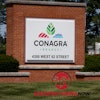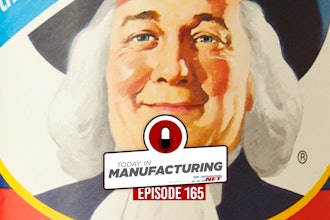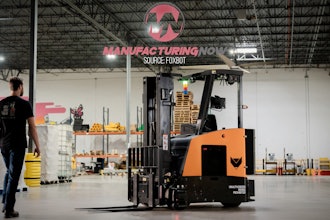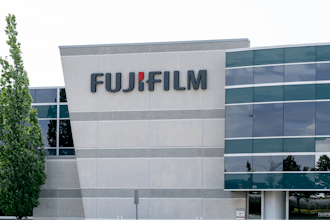In manufacturing, one of the largest variable components in the cost of products is labor. Labor costs can have a major impact on how manufacturers price products and invoice customers, ultimately impacting sales and profitability.
Detailed information about time on task and production efficiencies can help you better manage your workforce. But tracking tasks and the associated actual labor costs can be a very complex, time-consuming and costly effort. As a result, many manufacturers make do with standard cost estimates instead of actual costs, making accurate product pricing a challenge, if not impossible.
Despite how much is riding on labor costs, many manufacturers manage pricing and the production workforce based on estimated time and costs, without any real knowledge of how close those standard numbers really are to true labor costs.
Labor costs affect many other areas of the business as well, amplifying the impact of data inaccuracies on the financial health of the business. If costs are not accurate, engineering cannot make the best business decisions in the product design phase or search for changes that could enable more cost-effective production. Unresolved variances between payroll hours and production leave everyone guessing about production efficiencies and true costs. And finally, the overall financial management of the business is hindered.
Reconciling payroll and production
The inability to integrate time and attendance (T&A) and payroll with ERP systems forces the maintenance of two disparate silos of information. Significant time and expense is associated with the redundant effort to capture data for these systems. There is also no way to easily reconcile the two systems, and neither system on its own is equipped to track ‘time on task’ by employee or by work team -- either for a specific work order or a specific task.
A T&A system, which primarily enables the capture of employee arrival and departure times, may show that an employee worked 40 hours. But a second set of costing and tracking numbers entered in your ERP system may only show 30 hours as the labor estimate. The manufacturer is left without the ability to determine how those additional 10 hours were spent -- and management is left to wonder what costs were not captured, where charges may be inaccurate, and whether profit margins may actually be smaller than they appear.
Inaccurate labor variances
Labor variance is the difference in labor costing reported by the ERP and T&A systems. While the goal of today’s manufacturers is to keep labor variances under five percent, the reality is generally 20 to 30 percent -- or higher. This variance can be the result of many factors.
For example, the ERP system may be utilizing standard costing, which states that a specific product takes five hours to manufacture. But the plant manager may be aware that newly implemented lean initiatives have reduced that time to three hours. In this situation, the company’s profit margins are actually higher, but not visible. Without one consistent set of numbers driving both payroll and labor costing, a product may be priced higher than necessary, impacting competitive positioning. And sales will not realize they have leeway to lower pricing to win an order.
Controlling labor variances is even more challenging in dynamic manufacturing environments, where the collection of data is more complex. All day long, employees move between jobs and manufacturing lines, working on different products and different tasks.
In addition, there may be tasks that workers are executing that are not captured, creating the opposite scenario -- estimated labor costs are too low, reducing margins and profitability. Both situations are detrimental to the business -- yet impossible to correct without an efficient method to track and monitor actual labor costs.
‘Guesstimate’ pricing models
Standard costing is really a ‘best guess’ at labor costing -- these numbers are often inaccurate, incomplete or out of date. Accurate job costing requires the capture of all tasks associated with a specific product or job, including direct and indirect labor in setup, production and customer service. Inaccuracies in the collection of time allocated to machinery and the use of materials can result in the inability to properly pass those charges through to the customer, reducing company profitability.
Reduced operational efficiencies
Traditional methods used to collect labor costing information can significantly reduce efficiencies throughout the enterprise, affecting manufacturing line workers as well as plant managers and administrators. Time consuming manual business processes silently erode worker effectiveness.
For example, workers on the production line are forced to either spend time completing paper timesheets or traveling to and from a wired time clock or PC workstation to punch in and out.
The use of manual spreadsheets is very costly to the company -- managers can and often do spend as much as one full day per week on these calculations, wasting valuable time on redundant efforts.
This duplication also extends to administrators in payroll entering and processing paper-based time sheets, as well as the inevitable errors inherent in the ‘double-touch’ of data due to mistakes in keying or the transcription of handwritten information.
Under-utilization of the workforce: you can’t manage what you can’t measure
A highly efficient workforce is a key component in lean manufacturing initiatives. But when standard labor costs are utilized and no real-time, real-world data is available, companies cannot see where the workforce is efficient and where efficiency can be improved.
Basically, you can’t manage what you can’t measure -- and you can’t measure what you can’t track. So the inability to track time-to task ultimately inhibits maximum utilization of the workforce. Unproductive activities remain hidden from sight -- managers don’t have the information needed to understand where wasted time exists, and therefore cannot create an action plan to remove it.
Lack of visibility into real-time labor metrics can lead to:
• Overstaffing and understaffing of production lines, leading to unnecessary labor costs
• reduced manufacturing throughput
• increased maintenance and administrative costs associated with a larger workforce
• increased overhead costs that can further threaten profitability.
The solution: mobilize one’s existing labor management system
So why don’t more of today’s manufacturers track labor in real time? One reason is the assumption that such a system would be very costly, would take a long time to implement or that it would be highly disruptive to the business. However, virtually every manufacturer already has the foundation in place today to support real-time labor tracking: their existing T&A and ERP systems.
These back-end systems are capable of granular tracking of labor activities, but most manufacturers are only utilizing the T&A system to collect attendance information. Wired systems require employees to travel to and from a time clock or desktop computer to enter data on individual tasks -- a process that is very time consuming and disruptive for workers on the production line. Paper-based solutions require redundant work processes which are time consuming and error prone.
Mobility enables manufactures to fully leverage the hidden functionality of an existing T&A system. Mobility effectively “untethers” the T&A system, allowing its extension to the point of activity. Using a handheld mobile computer or laptop, line supervisors and line workers can capture and transmit the information required to reveal the real cost of labor in real time.
By leveraging mobility, enterprises can build on existing technology investments to create an accurate real-time labor costing system. The functionality of the existing T&A system is expanded. Instead of collecting only the time an employee arrives and leaves the facility, the system collects detailed labor costing data for individual employees as well as teams, including time on task, indirect hours and quantities produced.
In addition, a solution at the point of activity can also track other information related to costing activities for the ERP system, such as materials consumed, equipment utilization and inventory. This single set of labor costing information is utilized to populate both the T&A and ERP systems, effectively integrating these two long-disparate systems and enabling reconciliation of payroll and production hours.
Also, mobile labor tracking solutions are extremely flexible and able to integrate easily with existing or desired workflow. The solution can be deployed for each employee, or for line leads and supervisors, regardless of whether they are on the production floor, out in the yard or even at a customer site. When workers have access to a simple-to-use application on a mobile computer, you can automate, collect and error-proof the exact time spent on any given task.
Well-designed front-line applications do much more than attempt to squeeze a browser window onto a mobile device. Developed to meet the requirements of the mobile device as well as the data collection requirements of the business, these applications combine available device functionality and best-in class application automation practices. Easy-to-navigate screens and menus, pre-populated dropdown lists of valid values, bar code scanning of work orders and other paperwork as well as employee badges, and the ability to scan an RFID tag on equipment and materials are all considered part of a best-in-class application.
The result? Accurate labor costing information is collected easily, cost-effectively and with little opportunity for error -- with all information available in real time.
Affordable and easy to deploy with a rapid return on investment (ROI)
By building upon the T&A and ERP systems already in place, manufacturers are able to implement a real-time labor management system quickly and easily. The addition of a front-end application running online or offline on a mobile computer provides an “anywhere anytime” extension of these core business systems, effectively leveraging the value of existing technology investments. Instead of a multimillion dollar solution that takes years to implement, employees can be up and running in as little as a few weeks, with minimal or no changes required to payroll, T&A or ERP systems.
The increases in accountability and productivity typically deliver a full return on investment in less than 12 months. And the ROI is further improved if there is an existing mobility infrastructure that can be leveraged, such as mobile computing devices -- handhelds or laptops -- and a wireless network.
The resulting real-time labor management system enables collection of accurate labor costing data throughout the enterprise -- from workers on the plant floor, in the yard, warehouse and distribution center as well as service technicians performing installation and maintenance on site at customer locations. Benefits include:
• increased job costing accuracy
• improved productivity
• total accountability of labor hours
• reduction in data errors
• improved payroll accuracy and compliance
• reduced order-to-cash cycle
• real-time job status
• refined costing management
• improved overall workforce management and utilization.
By layering mobility on top of existing T&A and ERP systems, manufacturers can rapidly deploy a cost-effective mobile labor management system capable of delivering many operational, strategic and financial benefits. The ability to automate the collection of actual labor costs ensures the accuracy of the data and improves productivity by eliminating manual procedures.
The ability to integrate information in the T&A and ERP systems provides the long sought after ‘single truth’ for labor costing -- a single set of reconciled labor hours. Visibility into actual labor costs protects and maximizes profitability and competitive positioning throughout engineering, pricing, estimating and billing activities.
Kevin Prouty has over 15 years as both a user and system integrator of production operations software. Before joining Motorola he was responsible for analysis and research of the impact of information technology strategies on the automotive and heavy truck industries. Prouty also advised non-automotive clients on applying technology for competitive advantage in production operations. He can be reached at [email protected]






















